Locations
3457 to 3480 of 5488 results
-
ARCHAEOLOGICAL SUPPPORT POINT WIJNALDUM
ARCHAEOLOGICAL SUPPPORT POINT WIJNALDUM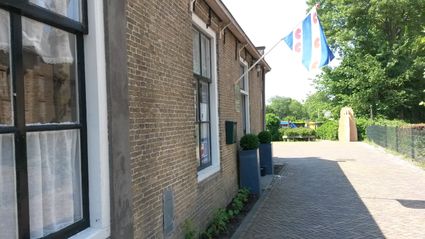 Wijnaldum
Wijnaldum
from your location
-
Monument Gaele Visser
Monument Gaele Visser
On May 2, 2015, a monument was unveiled here for the Frisian-Canadian soldier Gaele Visser, born in Haskerhorne in 1920 and emigrated to Canada in 1930. Gaele Visser enlisted in the Canadian army in 1942, specifically in the Algonquin Regiment. He fought in the liberation of Western Europe and was killed on April 23, 1945, near Oldenburg (Germany).
He is buried at the Canadian War Cemetery in Holten. The monument provides information about both his private life and military career.
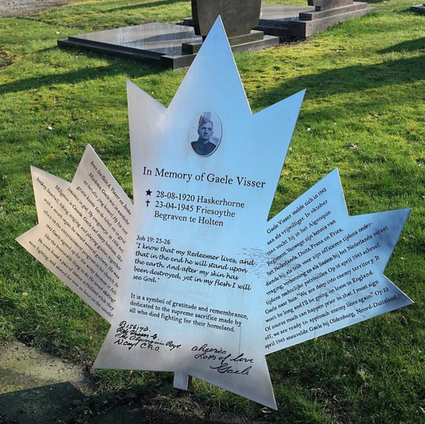 Haskerhorne
Haskerhorne
from your location
-
-
Birthplace Titus Brandsma
Birthplace Titus Brandsma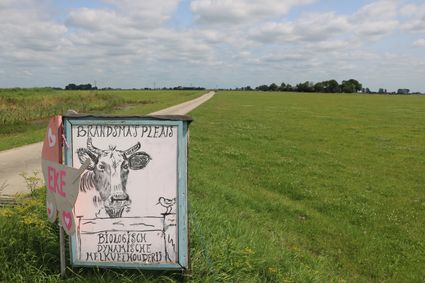 Burgwerd
Burgwerd
from your location
-
Nynke's Pleats
Nynke's Pleats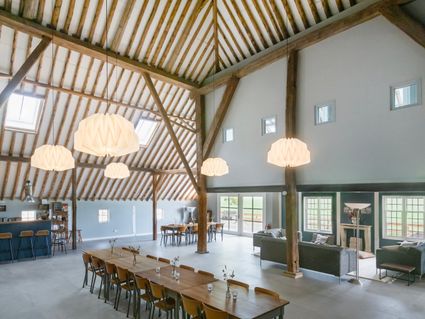 Piaam
Piaam
Direct boekbaar
from your location
-
Dolfijntje
Dolfijntje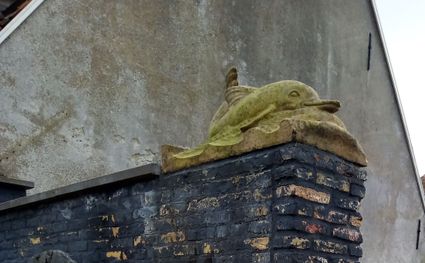 Harlingen
Harlingen
from your location
-
Markt23
Markt23 Sneek
Sneek
from your location
-
Alde Feanen - Earnesleat - Uitkijktoren
Alde Feanen - Earnesleat - Uitkijktoren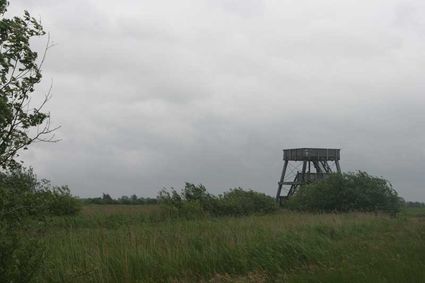 Garyp
Garyp
from your location
-
De Witakker - Groepsaccommodatie De Witakker
De Witakker - Groepsaccommodatie De Witakker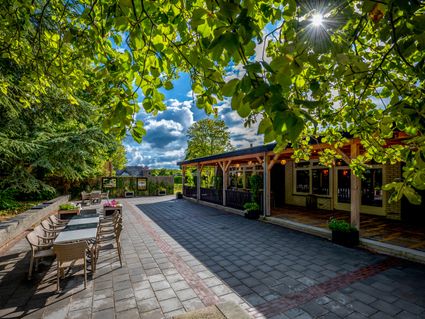 Rijs
Rijs
Direct boekbaar
from your location
-
Terschellinger duinvallei en Watermunt
Terschellinger duinvallei en Watermunt Oosterend Terschelling
Oosterend Terschelling
from your location
-
Zijda Yachting - Captain Willem Barentsz Elite
Zijda Yachting - Captain Willem Barentsz Elite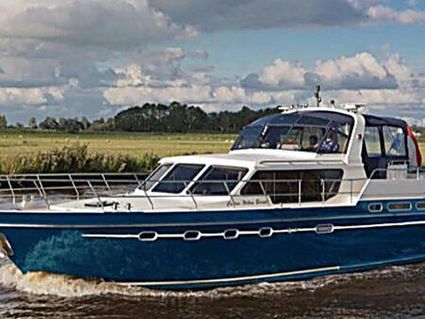 Jirnsum
Jirnsum
Direct boekbaar
from your location
-
Brownies&downieS Leeuwarden
Brownies&downieS Leeuwarden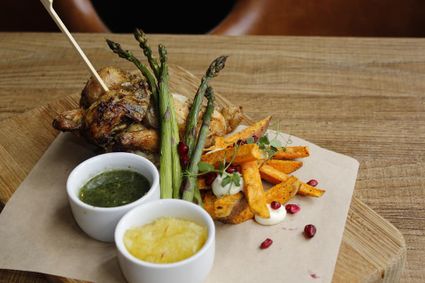 Leeuwarden
Leeuwarden
from your location
-
Lunchroom Tramhalteplein
Lunchroom Tramhalteplein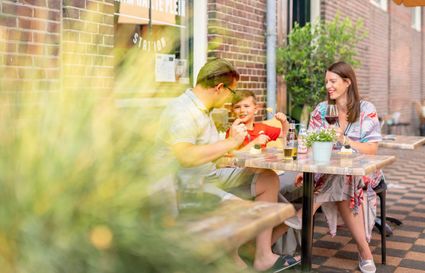 Noordwolde
Noordwolde
from your location
-
Play Farm 'Boer Bart'
Play Farm 'Boer Bart' Rotstergaast
Rotstergaast
from your location
-
De Kop van de Afsluitdijk
De Kop van de Afsluitdijk
De Afsluitdijk was op 18 april nog één van de laatste open routes naar Noord-Holland. De bezetter was er veel aan gelegen om de Canadezen zo lang mogelijk tegen te houden. Toch wisten de Canadezen de Duitse troepen hier in korte tijd en zonder eigen verliezen te verslaan.
In de ochtend van 18 april werd er nog op enkele plekken in Friesland strijd geleverd. De Kop van de Afsluitdijk was nog onder Duitse controle. En ook Makkum was nog niet vrij. Daar zou in de middag de strijd losbarsten. Op de Kop van de Afsluitdijk hadden de Duitse troepen zich stevig ingegraven. Er waren tal van versperringen aangebracht. En de Duitsers hadden veel zogenoemde betonnen ‘Tobruk’ bunkertjes laten aanleggen die meestal door twee militairen met een mitrailleur werden bemand. Ondersteund door ook nog eens een stuk 75 mm. geschut en vele stukken licht luchtafweergeschut wachtten zij de Canadese aanval af. De Canadezen wisten precies wat hun te wachten stond. Het Friese verzet had kaarten gemaakt van de Duitse posities. En met luchtverkenningen was door de geallieerden ook veel informatie verzameld. De Canadezen voelden er weinig voor om grote risico’s te nemen tegen zo’n goed verdedigde positie. Er was bovendien een zeer geringe kans dat er burgers geraakt konden worden. Alvorens de Canadezen de aanval inzetten werd de Kop van de Afsluitdijk daarom beschoten met artillerie. En de geallieerde jagers voerden luchtaanvallen uit. Nederlandse ingenieurs hielden hun hart vast tijdens de beschieting. Zij vreesden voor grote schade aan de Lorentzsluizen.
Op 18 april om 10:00 uur opende het geschut van de Royal Canadian Artillery het vuur. Een half uur later zetten de Queens Own Rifles of Canada de aanval in. Zij ondervonden nog nauwelijks weerstand. De artilleriebeschieting had zijn werk gedaan. De Duitsers waren verslagen. Nadat ook Makkum in de middag alsnog bevrijd werd, waren nu alle vluchtroutes geblokkeerd. Hiermee werd één van de hoofddoelen van de Canadezen bereikt. Met uitzondering van de Waddeneilanden was de hele provincie Friesland op 18 april bevrijd. De vrees van de Nederlandse ingenieurs was niet onterecht geweest. Het bombardement had schade aan de Afsluitdijk veroorzaakt. Maar de meeste schade was daarvoor al toegebracht door Duitse Sprengkommandos. Vanaf medio mei marcheerden nog enkele malen groepen Duitse militairen over de Afsluitdijk. Ditmaal kwamen ze uit Noord-Holland en werden ze afgevoerd naar krijgsgevangenkampen in Duitsland.
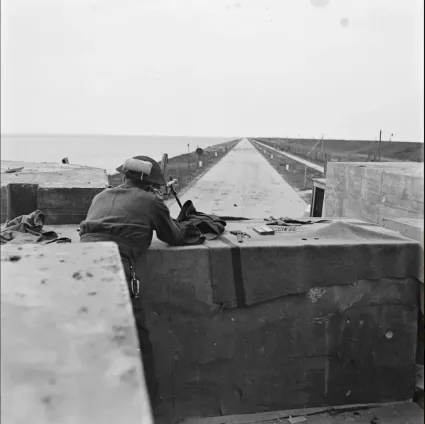 Zurich
Zurich
from your location
-
-
Peter Stuyvesant
Peter Stuyvesant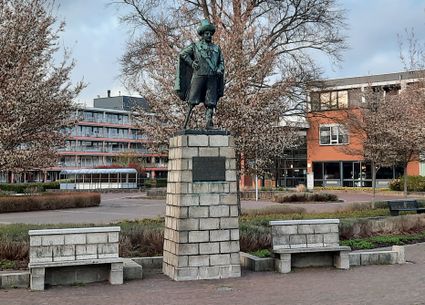 Wolvega
Wolvega
from your location
-
Boerderij de Omleiding
Boerderij de Omleiding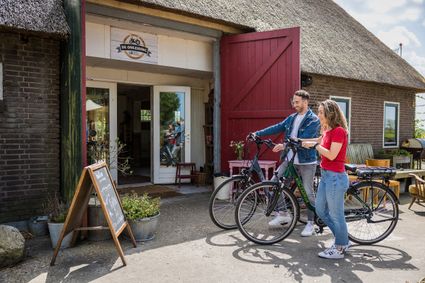 Feanwâlden
Feanwâlden
from your location
-
Startpunt Van boven tot bodem
-


Accept cookies to see this content.
Startpunt Van boven tot bodem
 Appelscha
Appelscha
from your location
-
-
Roptastate
Roptastate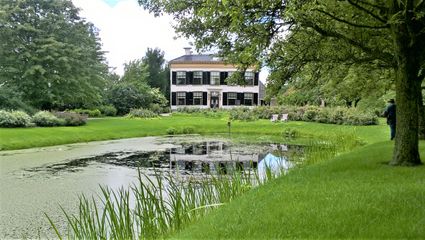 Wijnaldum
Wijnaldum
from your location
-
Riediel
Riediel Heeg
Heeg
from your location
-
The liberation of Friesland 1
The liberation of Friesland 1
In early April, it became clear that the liberation of Friesland was imminent. Although the province had not suffered a real Hunger Winter like other parts of the Netherlands, there were severe shortages of just about everything. And the terror of the occupying forces was growing. This also led to increased resistance against the occupying forces. The battle between the two was tougher than ever in early 1945.
In Friesland, assault groups known as Knokploegen (KP) were responsible for most acts of resistance. But there were other groups too. On the orders of the Dutch government in London, all these groups were merged into the Dutch Domestic Armed Forces (NBS). In Friesland, this happened on 12 December 1944.
The NBS, popularly referred to as the BS, gave the armed resistance an organisation with a clear structure. The NBS was also supposed to play a role in the upcoming liberation. To this end, resistance groups were provided with weapons from autumn 1944. These were dropped from the air.
On 8 April, Radio Orange broadcast the message "The bottle is empty." This was the signal for the NBS to start carrying out sabotage operations 36 hours later. The aim was to make it as difficult as possible for the Germans to defend themselves against the approaching Allied forces.
The resistance did this by putting bridges and railways out of order, blocking waterways and blocking roads. The response of the occupying forces was ruthless. In retaliation, dozens more prisoners were shot at different times and places.Once the Canadians entered Friesland on 12 April, they were supported extremely effectively by the Frisian resistance. Because it was superbly organised, they were able to help the Canadians take control of important bridges, repair damaged bridges, and advise on the most favourable route.
By 18 April, the whole province was liberated except for the Wadden Islands (these were liberated in late May and in June). Compared to other provinces, there was little fighting in Friesland. Overall, the few thousand German troops who had been unable to flee Friesland were defeated by the Canadians relatively quickly.
The commander of the Royal Canadian Dragoons, Lieutenant Colonel Landell, praised the actions of the resistance by stating "Friesland liberated herself." While that may be a bit of an exaggeration, the actions of the Frisian resistance undoubtedly accelerated the liberation. And reduced the number of casualties on the Allied side.
In confrontations with German troops and their Dutch accomplices, at least 31 resistance fighters lost their lives. On the Allied side, at least eleven Canadians and one Frenchman were killed. The fighting and shelling also resulted in dozens of civilian casualties. The number of casualties on the German side is not known, but probably ran into the hundreds. With 320 houses destroyed and 4,000 damaged and 80 bridges destroyed, Friesland was materially the least damaged province in the Netherlands.
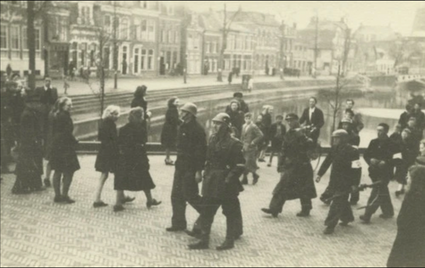 Willemsoord
Willemsoord
from your location
-
-
Occupation of the Blesse bridge by the NBS
Occupation of the Blesse bridge by the NBS
On 8 April 1945, the words "The bottle is empty" sounded on Radio Orange. This code message was the go-ahead for the resistance to start putting bridges, roads and railway lines out of order thirty-six hours later. The Frisian resistance answered this call en masse.
As soon as the Allied vanguard drew near, the armed resistance was also deployed to support their advance. And that sometimes meant that there were also bridges that had to be occupied rather than deactivated. One such action took place in the municipality of Weststellingwerf.
On 12 April 1945, the Canadian vanguard approached the village of De Blesse. The local section of the Dutch Domestic Armed Forces (NBS) was instructed by the resistance leadership to scout the railway bridge and road bridge (the Blesse bridge) over the Linde and, if possible, to occupy them.These bridges were important for maintaining the speed of the Canadian advance. Partly for this reason, they were also often guarded by German soldiers. In most cases, the bridges were also fitted with explosives. This allowed the bridge to be blown up if the Germans eventually had to retreat.
The reconnaissance revealed that the Blesse bridge was guarded by a total of about 10 soldiers. The NBS then decided to attack the bridge from two sides in the evening. Thanks to several aerial arms drops, the resistance fighters were well armed. In the dark, the men set off and split up into three groups. They eventually took up posts north and south of the bridge. The plan was to storm the bridge at two in the morning from the south.To their surprise, their fire was not returned as they approached the bridge. The guards appeared to have disappeared. With that, the bridge had unexpectedly fallen into the hands of the NBS without bloodshed. Moreover, no explosives were found to be affixed to bridge. After the bridge was secured, it was guarded until the Canadians arrived.
News of the occupation of the bridge was reported to the section commander the same night. And through other means of communication, the news also reached the Canadians. Holding the bridge facilitated and accelerated the Canadians' advance later in the day.
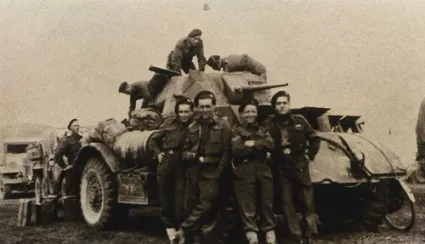 De Blesse
De Blesse
from your location
-
-
Kunstwerk Heilige Grond
Kunstwerk Heilige Grond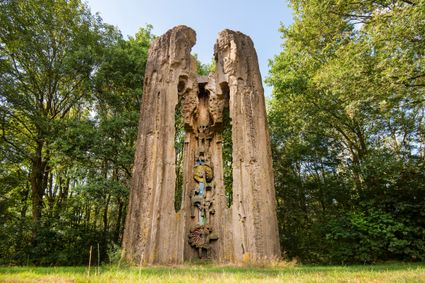 Burgum
Burgum
from your location
-
Gortershoek Bed & Breakfast en Groepsaccommodatie
Gortershoek Bed & Breakfast en Groepsaccommodatie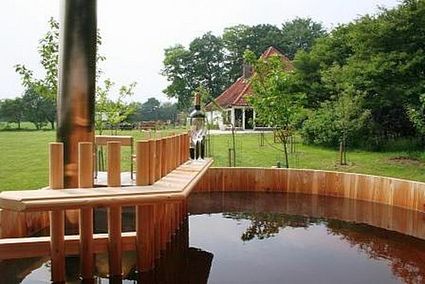 Haule
Haule
from your location
-
Molino Asian Bistro
Molino Asian Bistro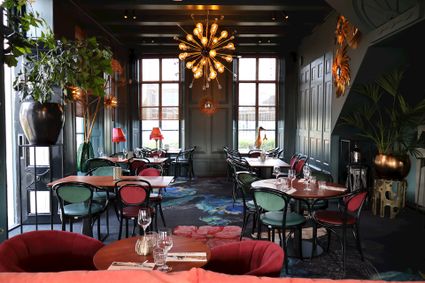 Drachten
Drachten
from your location



